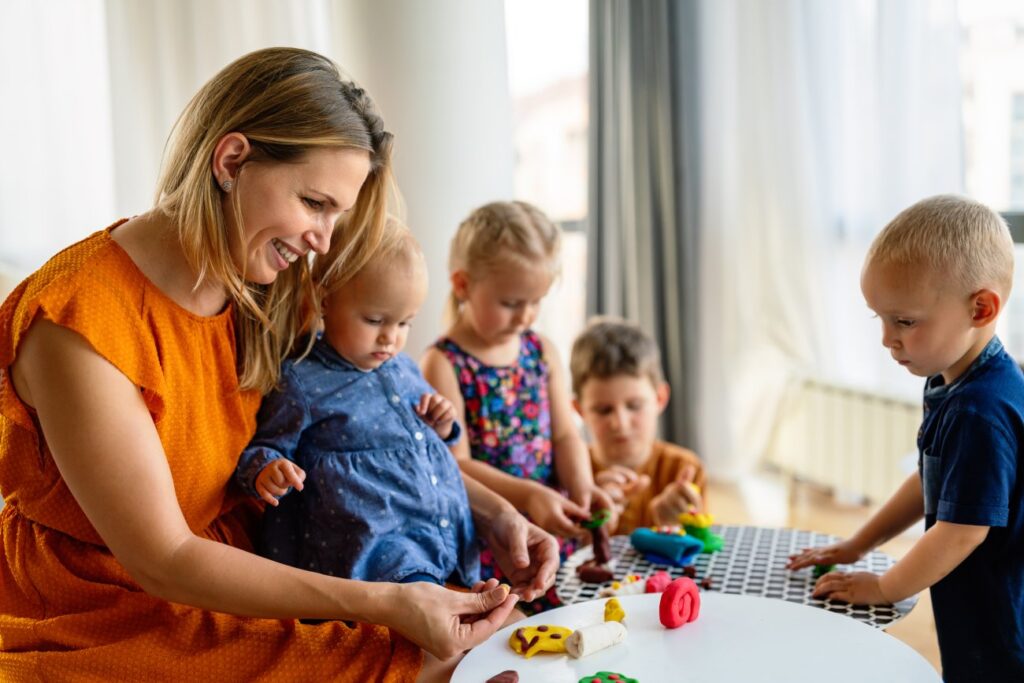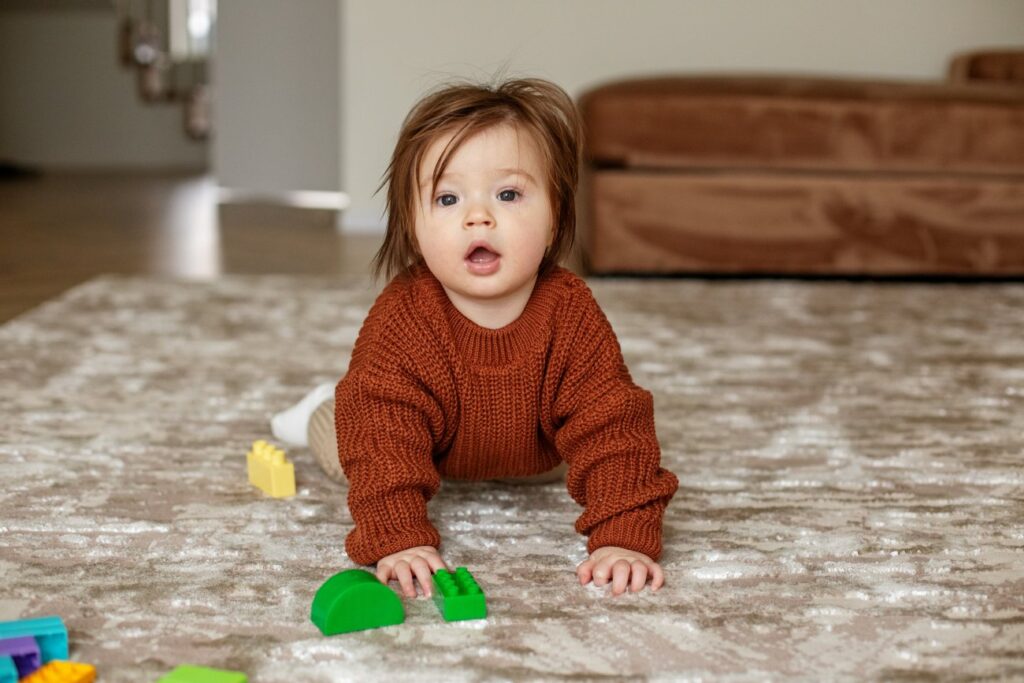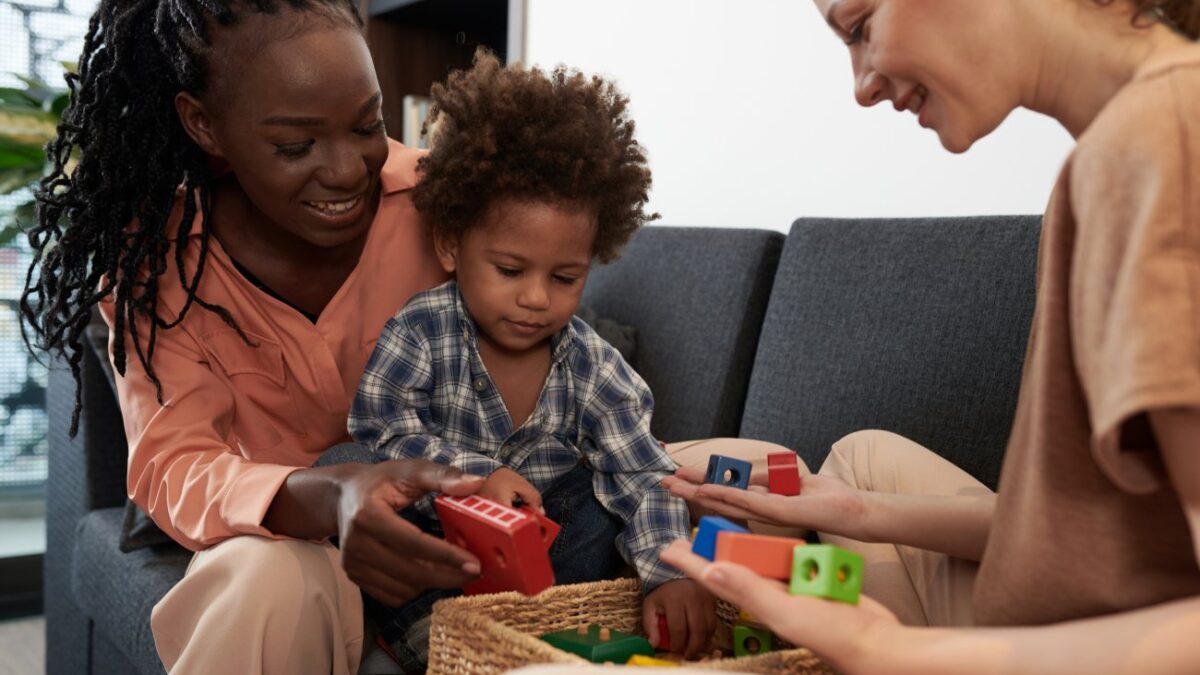Wow, so many games and such a mess! Everything on the floor and where to start tidying up at all?!? It is often challenging to recruit the kids to help arrange the house, and sometimes we even want to organize our home alone, quietly, and that’s it. But, using the kids to set up their games also has developmental benefits!
If we want “quality time” with our children, Arranging the games with the children can be the positive, educational and significant developmental pearl of the day.
I will give examples from toddlers to kindergarteners:
pay attention. The suggestions that come up here are of joint activity with the parent. So if you’re in a hurry for dinner and a shower, the kid is hungry (or maybe you are?), It’s probably less relevant. Try to start tomorrow, ten minutes before. I promise it will be worth the investment.
 Ages – one and a half years
Ages – one and a half years
There are many developmental goals in teaching the child to arrange the toys from an early age. First, it is good that the play area is not too crowded and full of toys. It is advisable to change the games throughout the day or week and give them a small number of games that will be accessible for play and inquiry. Visual overload and diversity of options will not support our goal of teaching the kids how to do it but will make a flood.
In really young toddlers, putting the games in a box /case is an activity by itself. The arrangement is part of a sequence of actions that emphasizes the essential basic concepts such as – “more,” “inside,” “enough,”/ “finished.” Understanding that we must arrange before the next activity organizes for the one-and-a-half-year-old toddler the beginning and end of each activity, and learning to understand the schedule and sequence (setting the house and washing hands and eating, for example).
A schedule is crucial for children, and the arrangement before the activity helps the child prepare for the next stage of the day. We may encounter constant resistance from the child, and perhaps the reason is difficulty with transitions between activities. Organizing the house needs to be a part of joint and relaxing activity with the kids (we can put a song that makes him understand that this is the time for the arrangement of the house), this way, we help our child get used to the plan and the transitions between activities.
 Toddlers – young kindergarten ages
Toddlers – young kindergarten ages
Divide the games into groups – when the kids grow up and have more diversity like; dice, hammers, cars, puzzles, utensils, tools, and more. The division into different boxes by theme will help your child organize by “categories.” Therefore, I recommend not to organize by groups and put all the toys into a big box in disarray. Organizing with groups will make opening a game easier and finding all its parts.
When you organize the games together by groups, try to do it at ease, you can also expand the vocabulary while giving descriptions (red, big, small car).
Remember – the Joint effort for arranging the house is not a quiz. It has to be a game for them, with a mutual discourse and to arrange the place together. Sometimes for the child to enroll for help mobilize, you have to sit next to him, change the tone of speech, and remember that not everyone will settle in a quiet sitting motionless. There are more active kids, and still, while walking in a mess, they listen to you and enjoy taking part. You know your child’s character and what pace will be more appropriate for optimal action. Do not forget that the goal is a joint activity and effort. Peacefully. We will applaud the child for keeping order and placing the items neatly back in the boxes.
According to their age, their interest; here’s a game idea: we call it: “I discover” – I SPY WITH MY LITTLE EYE- and see something that has wheels and is yellow”! ” And the kid searches in a rush and finds a yellow bus !. Now we’ll put all the cars in the bus box together. Simplify, emphasize what is appropriate for what, and why).
 Imagination games
Imagination games
For toddlers: You can dub a doll that arranges with the young child (amazing how young children like to talk to a doll !) Hold the doll and speak in a different voice – it will create a renewed interest of the child in the task and more significant mobilization, with laughter and fun. be creative – the effort pays off, and in fact, you will put in less effort.
For older children: sometimes difficult to recruit them to organize the mess. The visual clutter is stressful, and it seems like arranging so much chaos is an impossible task! But kindergarten children play and develop imaginative games, so it is possible to invent imaginary games for arrangement and organization. The game I recommend: The children become a tidy robot (probably inspired by the robotic vacuum cleaner), I, and every time the parent “activates” them, the child miraculously disappears (they always go somewhere and tell the tidy robot that he misses the adorable child he never met). The children who enter the character charges themselves, speak in a robotic voice, and receive compliments from the parent about the sophisticated model. It is a stunning experience guarantee if it catches on, which will remember even a decade later.
There is no need for a costume. We want to arrange the house and the mess! Simply.
Note about tasks that look huge and need to complete: Integrate the child in House chores, folding laundry, off-loading the dishwasher, arranging the clothes in the closet. These are, in fact, tasks that seem huge and may never end in the eyes of a young child. Thanks to routine practice, they learn to cope and plan. Every child has their way, method and it is possible and desirable to talk and hear from them: what are their methods of off-loading the dishwasher, for example: with what do they start? How long does it take? When we ask questions, we help the child through the answer to understand for himself what his strategies are and receive an appreciation for his participation and contribution at home. And maybe we’ll also discover some good tips.
 Compliments
Compliments
Compliment the child at the family dinner, in front of the whole family, for how nicely he arranged the table for the meal, emptied the dishwasher, organized the games today. Emphasize the values behind the arrangement – keeping games, perseverance in the task, keeping the house as a pleasant place. “Congratulations, you keep the toys in the boxes, that way they do not disappear, and you can find them tomorrow” and also perseverance in the task “We had a lot of work, but we started and finished quickly and fun.” Compliment the kid how relaxing it is to arrange with him when he and you are together (he does not “help” – he agrees!) And how pleasant when the room is tidy, and there is room to sit on the carpet, for example.
In conclusion, with all the difficulty we have with organizing and arranging games, this is of great developmental importance. When they are young, we should be with them in the arrangement, but we have gained, this was our significant activity with them today. We are learning concepts, the ability to perform a task from beginning to end, divide into groups, develop the imagination and values of responsibility, and keep our belongings and home.
with that said, Did I make you want to start a mess, to sort it out



